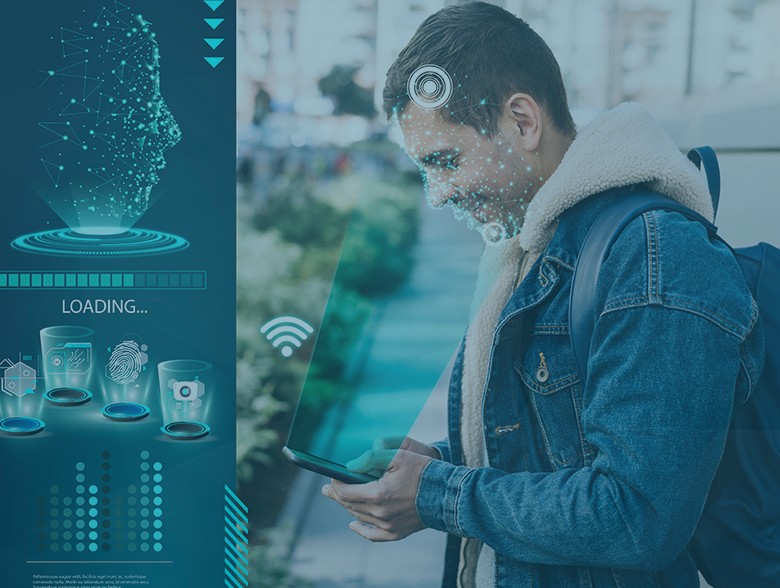Harnessing the Power of AI for Advanced Cyber Threat Intelligence and Prevention
By Bryan Kissinger, Senior Vice President of Security Solutions and Chief Information Security Officer, Trace3
The digital environment has evolved significantly, becoming a complex space where cybercriminals exploit vulnerabilities in critical infrastructure and sensitive data. These criminals use advanced malware and exploits to attack interconnected systems. Traditional security methods, based on fixed rules and configurations, are often inadequate to counter these sophisticated threats. However, artificial intelligence (AI) is emerging as a powerful tool in cybersecurity.
Artificial Intelligence in Cybersecurity
AI-based solutions are transforming cybersecurity, moving beyond enhancements to redefine how cyber threats are understood and countered. Cognitive fraud detection systems use machine learning to examine financial transactions, network activity, and user behavior. These systems operate at high speeds, identifying anomalies and patterns indicative of fraud, often catching such activities in real time.
Unlike older rule-based systems, which are more easily bypassed by attackers, AI algorithms continuously evolve. They learn from previous encounters and adapt their detection models to include new fraud tactics and trends, reducing false positives and enhancing security resilience.
AI-Driven Threat Intelligence Beyond Finance
Cybersecurity challenges extend beyond financial transactions to the broader digital infrastructure. AI-driven threat intelligence plays a crucial role here, enabling organizations to proactively defend against potential attacks. These systems analyze various data sources, including social media, dark web forums, and malware repositories, to provide a comprehensive view of potential threats and vulnerabilities. This information helps organizations strengthen their defenses, prioritize patches, and take preventive actions.
AI-powered threat intelligence allows organizations to move from reactive to proactive security strategies. They can now anticipate potential threats, close security gaps, and deploy countermeasures in advance, shifting the balance of power from attackers to defenders.
Behavioral Analysis and AI
The human aspect is a vital component of cybersecurity. AI-based behavioral analysis systems examine user behaviors, such as login patterns, device usage, network traffic, and resource consumption. By applying AI to these activities, the systems can detect anomalies that may indicate compromised accounts, insider threats, or unauthorized access. For example, an AI system might flag a user logging in from an unusual location or device as a potential security risk.
Predictive Analysis in Cybersecurity
Predictive analysis in cybersecurity aims to foresee and prevent attacks before they occur. AI models analyze historical attack patterns and threat intelligence to predict future attack vectors. This approach enables organizations to strengthen defenses where needed most and neutralize threats proactively.
Human-AI Collaboration in Cybersecurity
While AI offers significant advantages in cybersecurity, it is not infallible and can be prone to manipulation and bias. Effective cybersecurity strategies combine human expertise with AI capabilities. Human analysts guide the development and application of AI systems, ensuring they align with organizational priorities. Human oversight is also crucial for interpreting AI-generated insights and ensuring appropriate responses to threats.
Challenges and Considerations for AI in Cybersecurity
The integration of AI into cybersecurity presents several challenges and considerations:
- Data Privacy and Governance: AI requires large datasets for training, raising data privacy and security concerns. Establishing robust data governance frameworks is essential for ensuring transparency and user control over their data.
- Bias and Fairness: AI systems can reflect societal biases if trained on biased data. It is important to select data carefully, test rigorously, and monitor AI systems continuously to prevent discrimination.
- Explainability and Interpretability: Understanding the decision-making process of complex AI models is challenging. Developing explainable AI models is important for trust and control.
- Human-AI Collaboration: AI should complement, not replace, human analysts. A collaborative environment where humans and AI work together enhances the effectiveness of both.
The future of cybersecurity is closely tied to AI development. By harnessing AI’s potential and addressing its limitations with a human-centric approach, a more secure digital environment can be achieved.
About the Author
 Bryan Kissinger Senior Vice President of Security Solutions and Chief Information Security Officer Trace3. Bryan C. Kissinger, PhD is a seasoned IT and security professional with over 20 years of experience leading global teams in the successful delivery of technology solutions that enable business value. He is known for his ability to rapidly mature IT risk and information security programs and quickly deliver on the implementation of emerging technologies to solve complex business issues. He has served as the information security leader at multiple large healthcare organizations—this expertise is coupled with Big 4 consulting leadership across emerging technology, financial, retail, and government sectors. Using his unique business-minded approach, he is an advocate for, and has implemented many, next-generation security solutions focused on preventing and detecting current and anticipated threat vectors.
Bryan Kissinger Senior Vice President of Security Solutions and Chief Information Security Officer Trace3. Bryan C. Kissinger, PhD is a seasoned IT and security professional with over 20 years of experience leading global teams in the successful delivery of technology solutions that enable business value. He is known for his ability to rapidly mature IT risk and information security programs and quickly deliver on the implementation of emerging technologies to solve complex business issues. He has served as the information security leader at multiple large healthcare organizations—this expertise is coupled with Big 4 consulting leadership across emerging technology, financial, retail, and government sectors. Using his unique business-minded approach, he is an advocate for, and has implemented many, next-generation security solutions focused on preventing and detecting current and anticipated threat vectors.
Dr. Kissinger holds a Bachelor of Science degree in finance from the University of Maryland, a master’s degree in Business Administration, and a PhD in Information Technology Management. His certifications include CISSP, CISA, CCNA, CWNA, and MCSE.
Dr. Kissinger is a Navy veteran, having served as a Surface Warfare Officer for seven years on active duty with tours in the Western Pacific and Persian Gulf theaters.
He currently serves as Senior Vice President of Security Solutions and Chief Information Security Officer for Trace3, and splits his time between Miami Beach, FL and Asheville, NC. Brian can be reached online at https://www.linkedin.com/in/bryan-kissinger-phd-0b75245/ and at our company website http://www.trace3.com/

